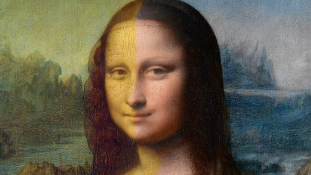For centuries, art enthusiasts and casual observers alike have wondered about the mysterious absence of eyebrows in Leonardo da Vinci's most famous painting, the Mona Lisa. The truth, revealed through cutting-edge scientific analysis, is both simpler and more complex than many might imagine.
In 2007, engineer Pascal Cotte made a breakthrough discovery using his pioneering multispectral camera technology. After analyzing high-definition scans of the painting, Cotte found that the Mona Lisa originally did have both eyebrows and eyelashes. The evidence was published in his detailed scientific findings presented at the Optical Society of America.
The disappearance of these features can be attributed to two primary factors:
First, da Vinci's painting technique played a crucial role. He used the sfumato method, which involved building up multiple thin layers of paint and glazes to create subtle gradations of light and shadow. This delicate technique, while revolutionary for its time, made some elements of the painting particularly vulnerable to wear.
Second, and perhaps more significantly, centuries of restoration work and cleaning have gradually eroded these delicate features. The extremely fine brushwork used for the eyebrows and eyelashes has simply not survived the painting's 500-year history.
The French engineer's revolutionary camera, capable of projecting 13 different wavelengths of light onto the painting, revealed that da Vinci had indeed painted the eyebrows using very fine brushstrokes. However, these subtle details have been gradually lost through the centuries of cleaning, restoration, and natural aging of the paint.
This scientific evidence effectively ended decades of speculation that the missing eyebrows were an intentional artistic choice by da Vinci. Some art historians had previously theorized that the lack of eyebrows reflected contemporary fashion trends of the early 16th century, when upper-class women sometimes plucked their eyebrows completely as a beauty standard. While this practice did exist, it was not the reason for the Mona Lisa's appearance.
Today, the Mona Lisa continues to be studied using increasingly sophisticated technology at the Louvre Museum in Paris. These ongoing examinations continue to reveal new details about da Vinci's masterpiece and his painting techniques, though conservation efforts must balance the desire for research with the need to protect this invaluable artwork for future generations.
[Note: This information is based on Pascal Cotte's 2007 research findings and subsequent publications from the Louvre Museum. As with any historical research, new findings may emerge with advancing technology.]

















































